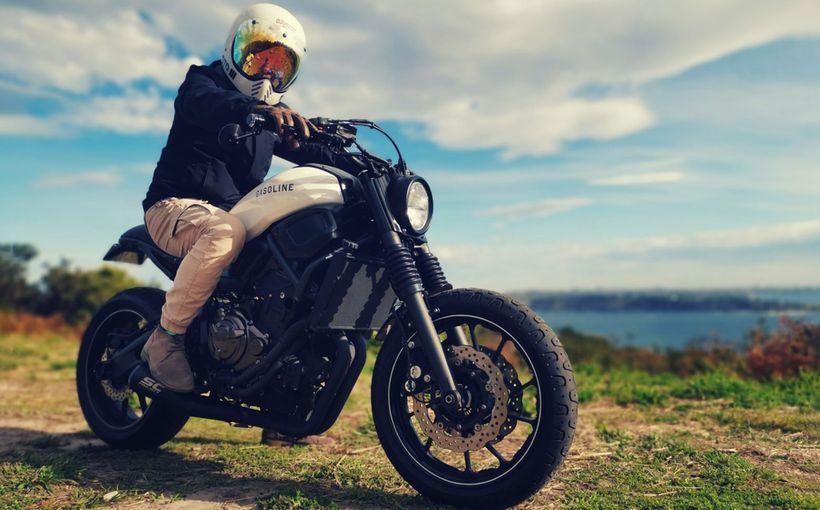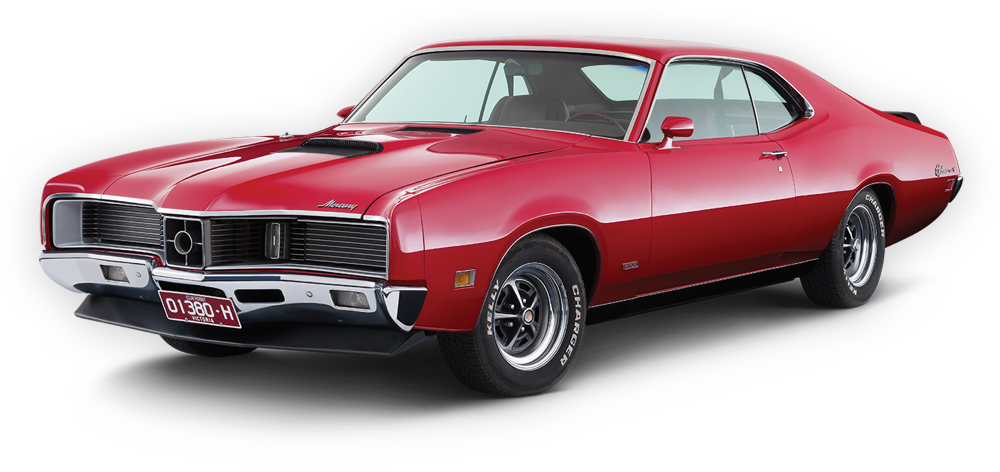1968 Yamaha DT-1: The Trailblazer of Japanese Motorcycles
“This machine not so much filled a category but created one – the first true dual-purpose on/off-roader that really worked,” writes Old Bike Australasia’s Jim Scaysbrook.
“In this innocent period, the outer urban areas of Australian capital cities were still mainly bush, with miles of fire trails and gravel roads just crying out to be monstered by the new breed of dirt jockey. And after a weekend of fun in the scrub, this machine could be ridden to work as well with no more than a change of tyre pressures. And all for $657.50.”
Australia was one of many global export markets for the DT-1 but the catalyst for its creation was Yamaha’s US sales office and, by extension, its west coast dealer network in the early 1960s.
At that time, growing numbers of motorcyclists were discovering the fun and excitement of recreational off-road riding, from the vast expanses of California’s Mohave Desert to the picturesque foothills of Colorado’s Rocky Mountains.

The 1968 DT-1 created the ‘trail bike’ category.
Image: https://global.yamaha-motor.com/stories/offroadmania/ch2/
Image: https://global.yamaha-motor.com/stories/offroadmania/ch2/
To cater for this emerging trend that was destined to boom, Yamaha’s American contingent called for a purpose-built all-rounder that was as competent on bitumen as it was on dirt, so that riding to and from your favourite off-road destination was just as enjoyable as the time spent there.
So, although the DT-1 created a lucrative new ‘trail bike’ segment in the US, it proved equally popular in other global markets with vast expanses of wilderness, including Australia of course.
The DT-1 was an enormous success and served as a template for many derivatives that followed. In fact, Yamaha’s venerable DT line remained in production for more than four decades from 1968 to 2011, during which it evolved through numerous generations and models (including CT, AT and RT variants) with engine displacements ranging from 50cc up to 400cc.
But it all started with the groundbreaking DT-1, which ranks as one of motorcycling’s genuine Super Models. Its development is closely examined in this review.

Yamaha’s YX26 motocross prototype played a pivotal role in the DT-1’s design.
Image: https://global.yamaha-motor.com/stories/offroadmania/ch2/
Image: https://global.yamaha-motor.com/stories/offroadmania/ch2/
The DT-1 was the result of a development program which had to overcome cultural obstacles between the US and Japan to achieve such a successful outcome.
In the early 1960s, Yamaha (like Japanese rival Honda) was focused on achieving success in FIM World Championship road-racing in the 250cc class. It started competing in 1961 and armed with its two-stroke twin-cylinder RD56 won its first race at Spa’s Belgium Grand Prix in 1963. The following year Yamaha won both the constructors’ and riders’ championships with the same machine.
It then turned its attention to the 250cc class of the rapidly growing sport of motocross. However, Yamaha soon discovered that a unique development path would be needed to achieve the same success on dirt, according to former engineer Toshinori Suzuki:
“In our race activities from 1963 to 1965, Yamaha was concentrating on the development of two-cylinder machines. A rider would use the same bike but alter the specs to suit road races or motocross. These bikes had an advantage on motocross courses where higher speeds could be reached, but they were at a disadvantage when rain fell or when on twisty courses with more turns. At the time, Suzuki and Kawasaki were competing with single-cylinder machines. That made us engineers at Yamaha anxious to develop our own single-cylinder bike.”

The DT-1 evolved into the DT-2 and later DT-3 in the 1970s.
Image: https://global.yamaha-motor.com/stories/offroadmania/ch2/
Image: https://global.yamaha-motor.com/stories/offroadmania/ch2/
With the YX26 project underway, Yamaha’s US sales branch, the grandly named Yamaha International Corporation (YIC), made a formal presentation at the company’s headquarters in Japan in early 1966, urging development of this new breed of dual-purpose motorcycle.
Management agreed and after YIC documented what it was proposing, the design and engineering work for what would become the DT-1 began in October 1966.
The American proposal was highly detailed and presented a formidable challenge to the company’s engineers. It had to be powered by a 250cc engine, it had to have strong elements of motocross and mountain trail performance, and it had to be equally competent on the road. The proposal also specified weight, wheelbase, seat height, ground clearance, width, tyre sizes and tread patterns, suspension designs and much more.

The DT-1 soon spawned smaller displacement variants like the DT 175 and many others.
Image: https://global.yamaha-motor.com/stories/offroadmania/ch2/
Image: https://global.yamaha-motor.com/stories/offroadmania/ch2/
The only solution was for Yamaha to send key members of its development team to the US to immerse themselves in the west coast’s off-road motorcycle culture, personally question riders on what they needed and even do some on/off-road riding themselves to get first-hand experience of what was required.
Fortuitously, at around this time the YX26 made its competition debut. And the event chosen was no less than Japan’s most prestigious dirt-bike race: the 1967 All-Japan Motocross Grand Prix. Yamaha works rider Tadao Suzuki dominated the 250cc event on his way to an emphatic debut win for the YX26 in front of 80,000 spectators.
The DT-1 designers noted numerous parallels with the YX26, so it was a no-brainer that the DT-1 was closely based on Yamaha’s first single-cylinder motocrosser, which allowed a stunningly short development time of around 12 months.

No one had seen anything like the DT-1 when it hit Yamaha showrooms in 1968.
Image: https://global.yamaha-motor.com/stories/offroadmania/ch2/
Image: https://global.yamaha-motor.com/stories/offroadmania/ch2/
The DT-1’s initial weight target was a wispy 100kg, but engineers soon realised that such a target was unrealistic given the need for road-legal lighting, instruments, mudguards etc and the use of stronger materials to ensure the DT-1 was unbreakable. Even so, they did a commendable job achieving a dry weight of only 112kg.
Its light but strong chrome moly steel-tube frame, which offered an ample 254mm of ground clearance, featured a single-tube upper backbone with twin lower loops to cradle the engine and provide a sturdy pivot point for the rear swingarm. The telescopic forks offered 150mm of travel (the longest stroke of any Japanese bike at the time) paired with adjustable coil-over rear shocks.
The chrome-plated handlebars were set high and wide for optimum control and the wide seat offered good comfort. Even so, keeping the rest of the package as slender and compact as possible was clearly prioritised with its narrow engine, upswept exhaust pipe and kick-starter all neatly tucked away. There was also a small headlight, taillight and indicators plus accurate and reliable speedo and tacho gauges.
Full-width drum brakes provided ample stopping power, and it gripped the ground with a meaty 4.00 x 18-inch rear tyre (specially developed in Japan for the DT-1) and 3.25 x 19-inch front, both with universal tread patterns and shrouded by neat metal mudguards.

Yamaha was keen to explain the many features of its DT-1 in advertising.
Image: https://global.yamaha-motor.com/stories/offroadmania/ch2/
Image: https://global.yamaha-motor.com/stories/offroadmania/ch2/
The DT-1 shared the same 70mm bore and 64mm stroke, but engineers opted for a stronger crankshaft plus a simple piston-port design in preference to the YX26’s more advanced reed-valve induction. Even so, the DT-1’s efficient five-port system developed in road racing optimised torque output, which was another key design objective.
Another was Yamaha’s Autolube oil injection system, which conveniently required topping up a small oil tank rather than having to manually pre-mix batches of oil and petrol which until then was the bane of two-stroke ownership. This system also ensured cleaner emissions, as the amount of oil injected was regulated by throttle openings in the single 26mm Mikuni carburettor.

The DT 360 surpassed the 250cc DT-1 as the ‘big boy’ of the expanding DT range.
Image: https://global.yamaha-motor.com/stories/offroadmania/ch2/
Image: https://global.yamaha-motor.com/stories/offroadmania/ch2/
The compact five-speed gearbox was also cleverly designed to allow the gear-lever to be swapped from left to right, to cater for the many riders raised on British bikes with right-side levers. The rear brake pedal could also swap sides for the same reason.
No doubt British bike owners would also have been impressed by the DT-1’s robust electrical system which kept working regardless of weather or terrain!

The DT 400 marked the high point for engine size in DT Yamahas.
Image: https://global.yamaha-motor.com/stories/offroadmania/ch2/
Image: https://global.yamaha-motor.com/stories/offroadmania/ch2/
“I first laid my eyes on the Yamaha DT-1 in December 1967 at the annual Cycle World Show in Anaheim. It was the star of the show. Nobody here had ever seen anything like it. I went to my dealer the next day and placed my order and the bike finally came in April the next year,” recalls Tom White, founder of White Brothers Cycle Specialties and member of the AMA Hall of Fame.
“Everybody was lining up to get this bike. It was a perfect combination for riding both on the street and off-road and it had a very unique look and a very unique sound. You could also outfit it with a Genuine Yamaha Tuning kit to increase the horsepower. It was a motorcycle that really changed the market here in America.”
Although primarily intended for recreational use, the DT-1 also proved to be a serious motocross contender in the 250cc class, by simply removing the street-legal equipment and installing the Genuine Yamaha Tuning (GYT) kit.

The last of the DTs launched in 2007 looked vastly different to the pioneering DT-1 yet shared the same bloodline which spanned decades.
Image: https://global.yamaha-motor.com/stories/offroadmania/ch2/
Image: https://global.yamaha-motor.com/stories/offroadmania/ch2/
The newcomer proved its competitive prowess only months after launch in Japan, when works rider Tadeo Suzuki (who won the All-Japan Motocross GP the previous year on the YX26) rode a GYT-kitted DT-1 to a debut victory in a round of the 1968 All-Japan Motocross Championship.
The DT-1 also enjoyed motocross success in the US, Australia and other export markets, prompting Yamaha to develop factory-prepared ‘works’ bikes which quickly evolved into the revered ‘YZ’ series of purpose-built motocross machines.
Other Japanese manufacturers soon followed Yamaha’s bold initiative by introducing their own dual-purpose ‘trail bike’ models which along with numerous European marques continues to this day. And all of them owe their existence to the groundbreaking Yamaha DT-1.









